Zeiss is a leading name in the world of microscopy, known for its high-quality optics and innovative imaging solutions. Monochrome cameras are crucial for many advanced microscopy applications, particularly in fluorescence and low-light imaging, where sensitivity and clarity are paramount. In this article, we will explore the best Zeiss monochrome microscope cameras, their key features, and how they can enhance your microscopy work.
Zeiss has long been a leader in the field of microscopy, renowned for its cutting-edge optical technology and innovative imaging solutions. When it comes to capturing high-resolution images and videos of microscopic specimens, Zeiss microscope cameras are some of the best in the industry.
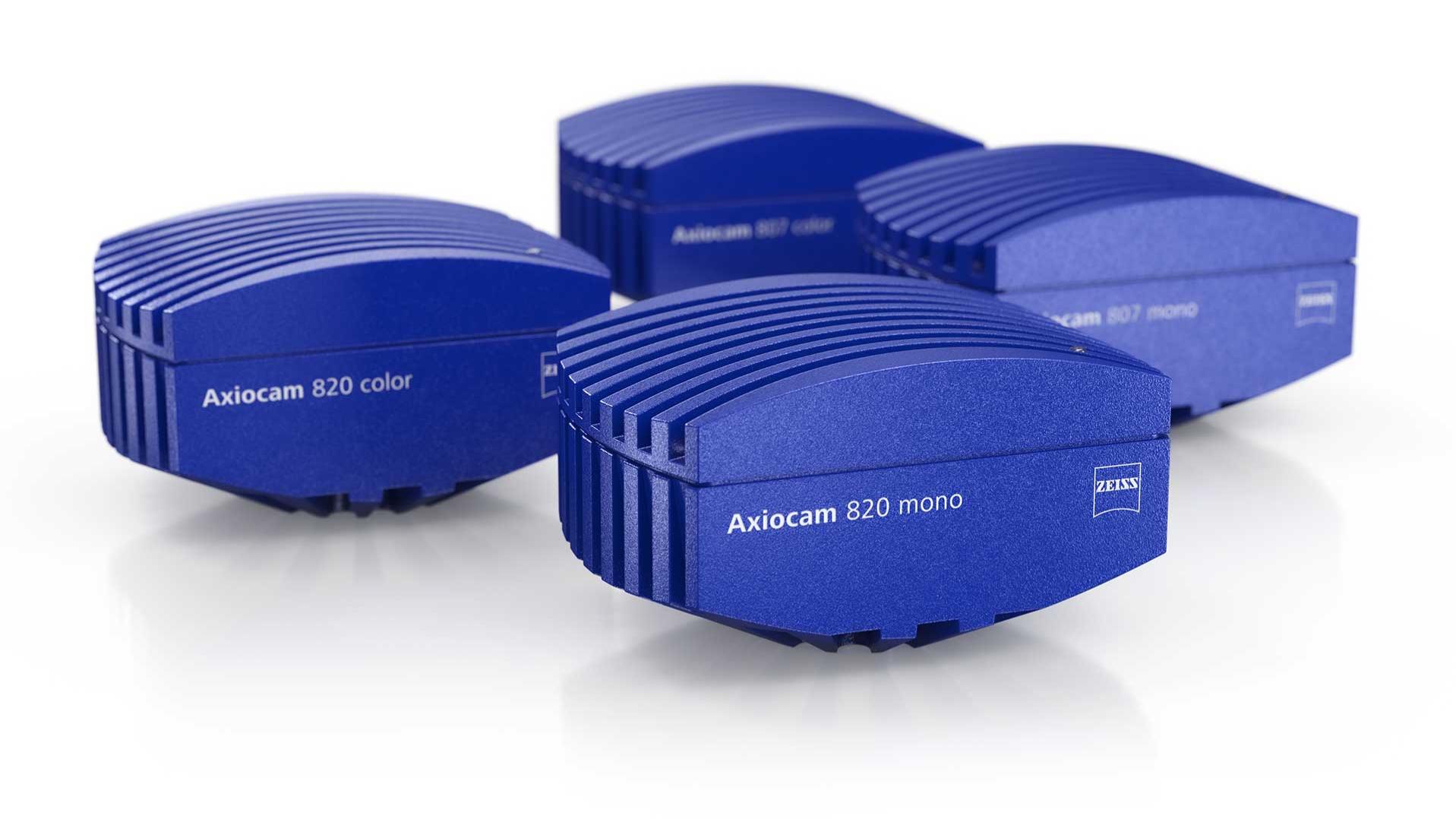
Your Interactive Guide to the ZEISS Axiocam Family [ FIND YOUR CAMERA HERE ]
Why Choose Zeiss Microscope Cameras?
Zeiss microscope cameras are known for their exceptional optical quality, reliability, and advanced imaging capabilities. ZEISS offers a wealth of microscope cameras as diverse as your imaging and documentation tasks. And because development never stops, they have once again updated and expanded the ZEISS Axiocam portfolio to better support the most demanding applications.
Here’s why they are a preferred choice for many microscopy professionals:
1. Superior Imaging Quality
Zeiss cameras are designed with high-resolution sensors and advanced optics, ensuring crisp, clear images with excellent color fidelity and contrast. This quality is crucial for detailed analysis and accurate documentation.
2. Innovative Technology
Zeiss incorporates the latest technology in its cameras, including high-speed imaging, low-light sensitivity, and advanced autofocus features. This innovation enhances the capabilities of your microscope, making it easier to capture dynamic processes and subtle details.
3. User-Friendly Software
Zeiss provides intuitive and powerful software solutions with their cameras, such as Zen and Labscope. These software platforms offer advanced imaging features, automated functions, and easy integration with various microscopy systems, streamlining your workflow.
4. Reliability and Durability
Zeiss cameras are built to last, with robust construction and high-quality components that ensure long-term reliability and consistent performance. This durability makes them ideal for both routine laboratory work and demanding research applications.
Top 5 Zeiss Monochrome Microscope Cameras
1. Zeiss Axiocam 820 Mono [ Learn More ]
The Axiocam 820 mono 20 megapixel camera is equipped with a large 17.5 mm diagonal back-illuminated CMOS sensor having a peak quantum efficiency of 86%. In combination with its low readout noise, this camera is the perfect choice for imaging faint fluorescence signals in living or fixed samples. Its square sensor efficiently utilizes the optical field of view of the microscope for capturing more details. The dual USB 3.0 interface enables the highest acquisition speeds without sacrificing the robustness of a standardized interface. The high performance and unmatched flexibility of the Axiocam 820 mono camera makes it the perfect choice for the most challenging samples in life science research.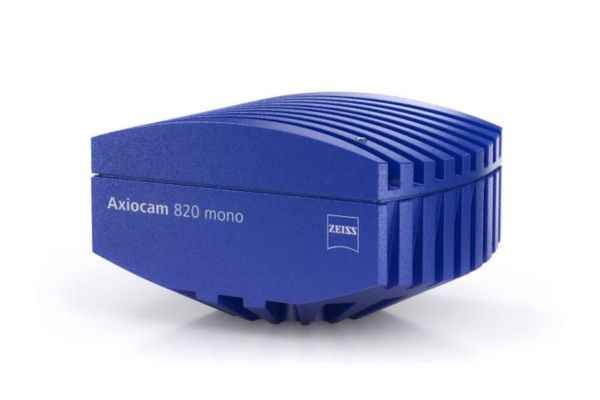
Key Features:
- 20 megapixel back-thinned square CMOS sensor with 17.5 mm diagonal
- 28 full-resolution images per second
- 30 frames per second in live image mode
- Small 2.74 micron pixels for resolving the finest details at all magnifications
- High 86% QE by back illuminated sensor architecture
- Low readout noise of 1.3 e- by high-quality noise inhibition technology for low light imaging
- Wide sensitivity spectrum from 350 nm to 1000 nm
- Fast read-out with global shutter architecture for distortion-free images
- Reproducible image quality due to active thermal stabilization of the sensor
- Robust, very fast and easy-to-use dual USB 3.0 connection
- Hardware triggering
Recommended For:
- The most demanding fluorescence applications in life sciences
- Imaging dim fluorescent signals with a good signal-to-noise ratio
- Fast tile scanning applications
- Dynamic events in live cell imaging
- Flexible setups with varying applications
2. Zeiss Axiocam 807 Mono [ Learn More ]
With its 17.6 mm diagonal, 7 megapixel CMOS sensor, Axiocam 807 mono allows acquisition of large fields of view with a single shot, resolving every detail of your specimen. The frame rate of 73 images per second at full sensor resolution captures even the fastest processes. Distortion-free imaging is guaranteed by the global shutter technology. In combination with its high peak quantum efficiency of 78% and low readout-noise, high signal-to-noise ratios are ensured even at low light conditions.Key Features:
- 7 megapixel CMOS sensor with global shutter technology
- Large sensor with 17.6 mm diagonal for extended field of view
- Wide sensitivity spectrum from 350 nm to 1000 nm
- 73 full-resolution images per second
- High-quality noise inhibition technology and 78% sensor quantum efficiency for lowlight imaging
- 4.5 micron pixels for optimal resolution
- Global shutter architecture for distortion-free images
- Reproducible image quality due to active thermal stabilization of the sensor
- Robust, very fast and easy-to-use dual USB 3.0 connection
- Hardware triggering
Recommended For:
- Fast imaging of dim fluorescent signals with good signal-to-noise ratio
- Fast tile scanning applications
- Dynamic events in live cell imaging
- Flexible setups with varying applications
3. Zeiss Axiocam 712 Mono [ Learn More ]
This camera brings lowest noise and high quantum efficiency for those applications that require highest sensitivity. Combining a large sensor with an abundance of small and sensitive pixels makes your Axiocam 712 mono a very flexible camera, suitable for countless different applications. The actively cooled CMOS sensor offers lowest readout noise and stable operation over long periods of time. Exposure times can range from 100 μs for the most dynamic specimens up to 60 s for detection of the dimmest signals.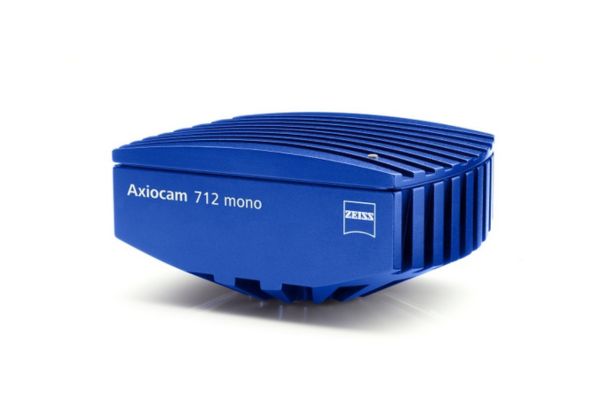
Key Features:
- 12 megapixel cooled global-shutter CMOS sensor
- Large sensor for extended field of view
- Wide sensitivity spectrum 350 nm – 1000 nm
- 20 frames per second in full 12 megapixel resolution
- 30 frames per second of the entire field of view in live image mode
- Low readout noise and analogue signal amplification
- Exclusive noise inhibition technology for lowlight imaging
- Dynamic range of 1:25,000 in high-dynamic range (HDR) mode
- Small 3.45 μm pixels for high-resolution imaging
- Hardware triggering
Recommended For:
- High-resolution fluorescence microscopy
- Large region imaging
- Research
- Live cell imaging
- Macroscopic imaging
4. Zeiss Axiocam 705 Mono [ Learn More ]
This 5 megapixel monochrome CMOS camera lets you capture time lapse sequences of the most dynamic processes in your sample. You can achieve more than 60 frames per second with full 5 megapixels. Or, you simply reduce the pixel count to accelerate your imaging even more – up to hundreds of frames per second. Hardware triggering delivers precise timing and enables extremely fast multidimensional imaging experiments. Active sensor cooling and low sensor readout noise make this microscope camera your ideal choice for fluorescence microscopy of dim and delicate specimens. The Axiocam 705 mono employs analog pixel binning and amplification of signal to boost sensitivity. With high peak quantum efficiency of up to 72 % and a broad spectral sensitivity ranging from UV to near-IR light, you can tackle even the most challenging fluorescence imaging applications.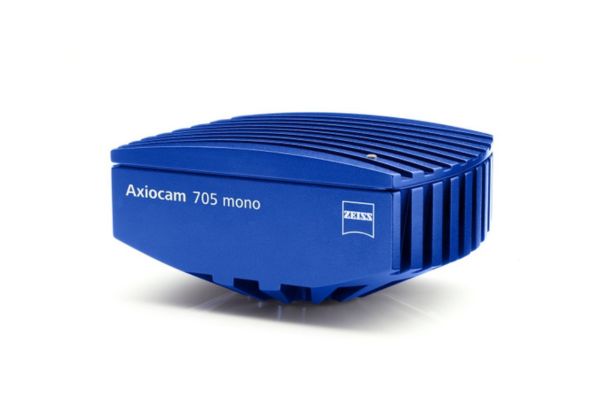
Key Features:
- 5 megapixel cooled global-shutter CMOS sensor
- 62 frames per second in full 5 megapixel resolution
- Wide sensitivity spectrum 350 nm – 1000 nm
- Exclusive noise inhibition technology for lowlight imaging
- Low readout noise and analogue signal amplification
- Dynamic range of 1:25,000 in high-dynamic range (HDR)mode
- Analogue pixel binning
- Small 3.45 μm pixels for high-resolution imaging
- Hardware triggering
Recommended For:
- High-resolution fluorescence microscopy
- High-framerate imaging
- Research
- Documentation
- Live cell imaging
- Low light microscopy
5. Zeiss Axiocam 305 Mono [ Learn More ]
Axiocam 305 mono your 5 megapixel camera from ZEISS for fluorescence imaging for your routine lab and enables a range of applications for live cell observation. The state-of-the-art CMOS Global Shutter technology lets you follow and capture samples accurately. Thanks to its high dynamic range, you can acquire single images with high contrasts and intensities. A dark homogenous background helps you see even the finest structural details. And it’s a really fast camera, acquiring up to 36 frames per second at full 5 megapixel resolution.Highly sensitive sensor technology and sophisticated camera engineering means your Axiocam 305 mono will deliver reproducible results every time. The sensor is temperature-stabilized, resulting in reproducible quality and reduced background noise. Easy to use ZEN imaging software fully supports the robust camera performance by an intuitive user interface through a simple and fast USB 3.0 connection.

Key Features:
- 5 megapixel CMOS global shutter sensor
- 11.1 mm image diagonal
- Fast readout with 36 images per second in full color resolution
- 12 bit digitization for finer gradation in signal
- Small 3.45 micron pixels for better sampling at low magnifications
- Global shutter architecture for distortion-free images
- Active thermal stabilization of the sensor for extremely reproducible image quality
- Easy to use super-speed USB 3.0 connection
- Fast and efficient operation with ZEN imaging software
Recommended For:
- Fluorescence imaging applications with live and fixed cells
- Documentation of fluorescent cell cultures
- Routine tasks in cell laboratories
- Materials research in near infrared wavelengths
- Time lapse recording
- Multi channel imaging without the need for hardware trigger synchronization
Choosing the Right Zeiss Microscope Camera
When selecting a Zeiss microscope camera, consider the following factors to ensure it meets your specific needs:
1. Application Requirements: Determine the type of microscopy you will be performing (e.g., brightfield, fluorescence, phase contrast) and choose a camera with the appropriate resolution, sensitivity, and features.
2. Compatibility: Ensure the camera is compatible with your existing microscope and software. Zeiss cameras are designed to integrate seamlessly with Zeiss microscopy systems, but check for compatibility with your specific setup.
3. Budget: Zeiss microscope cameras vary in price, so consider your budget and the features you need. Higher-end models offer advanced features and higher resolution, but there are also cost-effective options that provide excellent performance.
4. Software and Support: Evaluate the software that comes with the camera. Zeiss’s Zen and Labscope software offer powerful imaging and analysis tools. Additionally, consider the support and training available to help you get the most out of your camera.
Zeiss microscope cameras are a top choice for professionals and researchers who demand the highest quality imaging and reliability. With their advanced features, superior optics, and user-friendly software, Zeiss cameras enhance the capabilities of any microscopy setup. Whether you are conducting cutting-edge research, teaching in a classroom, or performing clinical diagnostics, there is a Zeiss microscope camera to suit your needs.
Explore the range of Zeiss microscope cameras and discover how they can elevate your microscopy experience. From high-resolution imaging to advanced fluorescence and live-cell imaging, Zeiss cameras are designed to deliver excellence in every observation.






Recent post